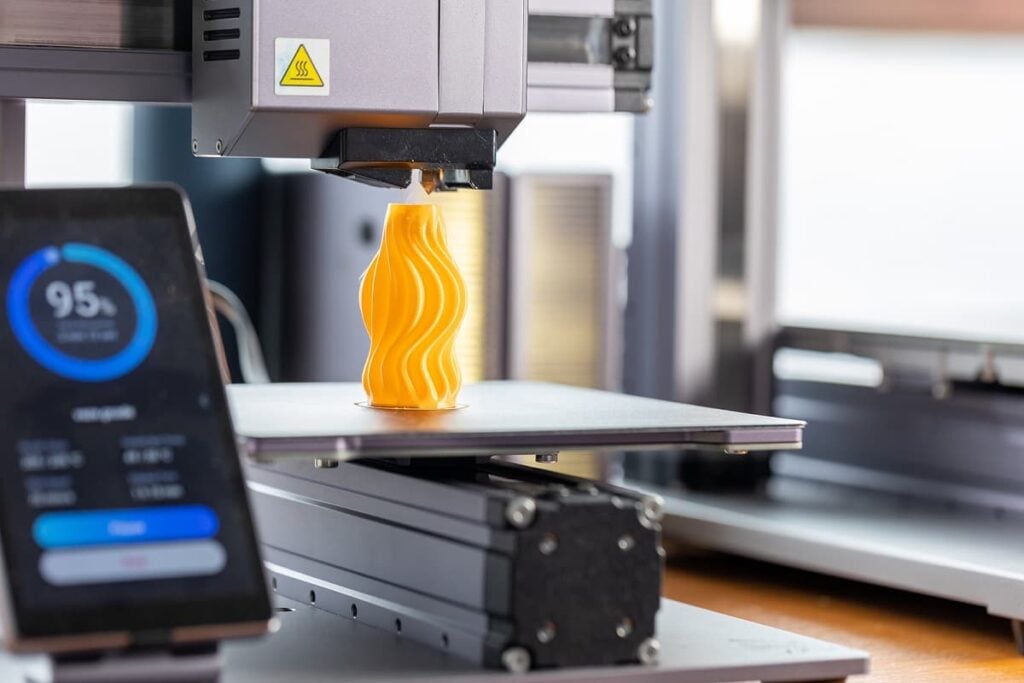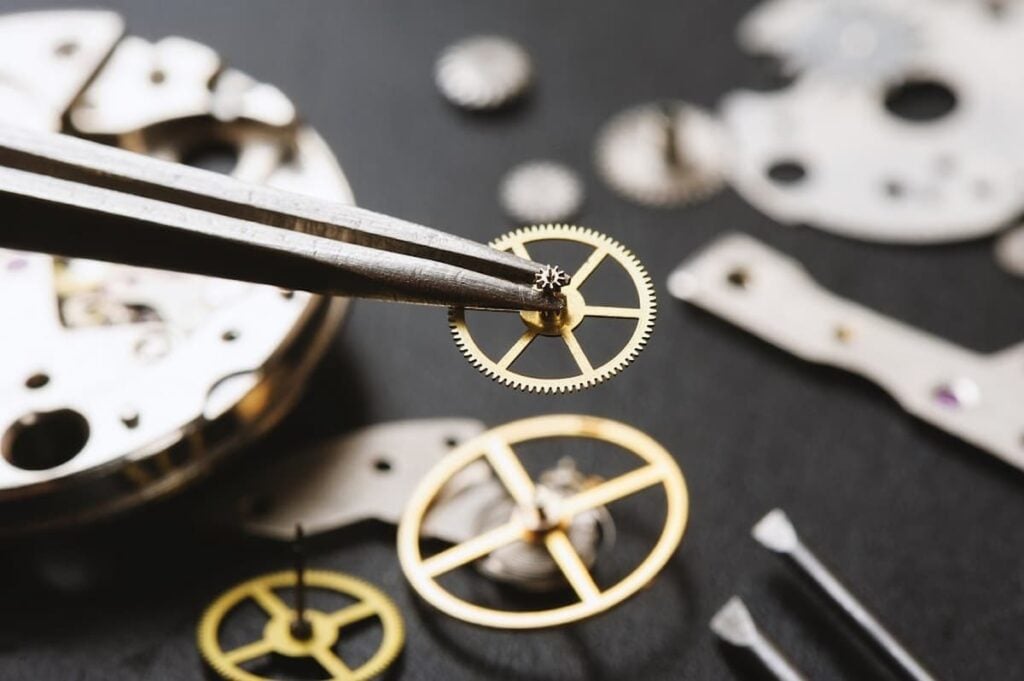Formlabs: A Vertically Integrated 3D Printing Startup
Table of contents

Last month at the Consumer Electronics Show (CES) in Las Vegas, toys for adults were officially allowed into the exhibition for the first time. One of the companies on the show floor was Dame Products, which produces a variety of devices for the ladies. The company also uses 3D printers for prototyping. It’s a little fact that Formlabs, which makes the machines used by Dame, not only doesn’t hide but actually called out in its pre-game press release for CES.
From Kickstarter to Kicking Ass
It’s another reason to like the Boston area startup, aside from its annual revenue run rate of more than $100 million and a $1 billion valuation. It reached unicorn status in just four years after raising nearly $3 million from Kickstarter in 2012. The valuation also came after Formlabs took in about $100 million in total funding, a far more modest amount of capital than either of the other 3D printing unicorns, Desktop Metal and Carbon, the most-well funded 3D startup last year (and ever).
Update 05/19/2021: Formlabs has raised $150 million in fresh funding to go toward increasing the company’s global headcount and helping them scale their technology toward mass production. This brings the company’s total funding to $253.7 million to date.
Unlike its billion-dollar brethren, Formlabs did not raise money in 2019. What it did do last year was announce new 3D printers and new 3D printer technology (more on that below). This year the company will be focused on delivering the first of its Fuse 1 and Form 3L printers to customers (and more on that below). It will also roll out a “wave of new materials” since acquiring Spectra Group Photopolymers, which had been Formlabs’ primary material supplier since shortly after the startup was founded in 2011 (yes, more on that below). Finally, the company also seems eager to sell the idea that 3D printing can be applied in nearly limitless ways in any number of markets (and, yes, more on that below).

Credit: Formlabs
All of those details come from Jennifer Milne, product manager at Formlabs, who replied with some robust answers with minimal fluff to a bunch of questions we sent her via email. So, let’s dig into the details of Formlabs, an MIT spinout with a score of investors.
3D Printers
Formlabs broke into the 3D printing hardware market with a desktop printer called Form 1. The company claimed to be the first to create a printer that small that used a 3D printing process called stereolithography (SLA), which uses photopolymer resins that harden when exposed to a UV laser. That’s different from fused deposition modeling (FDM) where the machine acts more like a hot glue gun, heating up a solid material until it’s malleable enough to push through a nozzle, which builds a product layer by layer. Since the debut of Form 1, Formlabs’ portfolio of 3D printers has grown in number and print volume.
In 2017, the company introduced its first major departure from the Form line with Fuse 1, a selective laser sintering (SLS) 3D printer. As the name implies, this model uses an autonomous laser to sinter powdered material together based on a 3D model. In this case, the material of choice is nylon, a durable but bendy plastic that can be used to build prototypes or produce final products. The printer is finally expected to be delivered to customers by the middle of this year at a price point starting at $9,999.

The Form 3D desktop printer got a tech upgrade this year using what Formlabs calls Low Force Stereolithography (LFS), a process that uses a flexible tank to reduce stress forces on parts while they print, as well as a Light Processing Unit (LPU) to maintain a uniform, high-density laser spot to ensure accurate, repeatable prints. That all adds up to smoother parts that peel away from the scaffolding like butter. The new desktop 3D printer, Form 3, has a bigger sibling known as the Form 3L, which offers 5X the build volume.

Milne said Form 3L represents the next step in making 3D printing price competitive to other kinds of mass-production methods, like injection molding. It too will retail for $9,999 and should begin shipping toward the end of the year.
Use Cases
But if you want to understand where Formlabs is headed, at least in the near future, then look no further than the newly introduced Form 3B, a 3D printer devoted to one of the most common uses of the technology today – dentistry. The machine counts more than 10 applications, from clear aligners to dentures. The company even established a dental business unit to support the enterprise. It certainly makes sense, given that roughly one-third of Formlabs’ business is from the dental and medical markets, according to Milne. About 13 million of the 40 million 3D printed parts made on Formlabs’ 50,000 printers are dental parts, she added.

Formlabs plans to push even further into medical applications. One example that Milne cited was the Mayo Clinic, which has opened 3D anatomic modeling laboratories at several of its clinical locations. Doctors and surgeons use the 3D-printed models to help them treat patients based on their exact anatomy. Like using augmented reality for planning a surgical operation, 3D-printed anatomical models can improve surgical outcomes, based on peer-reviewed medical journals, according to the Mayo Clinic. And that’s just the beginning of what’s possible:

More recently, Formlabs inked a deal with GE Healthcare to help clinicians more easily make 3D printed, patient-specific models from imaging data at a lower cost than currently available.
“We see this application of 3D printing technology at the forefront of precision healthcare innovation that will become much more common in the years to come and would benefit from its own dedicated 3D printer,” Milne said.
Formlabs’ ongoing partnerships with companies like Gillette and New Balance are examples of the technology moving away from modeling and prototyping and into customized end part production. In the former case, razor manufacturer Gillette piloted Razor Maker, a direct-to-consumer 3D printing platform that gives consumers the option to create and order customized (and even monogrammed) 3D-printed razor handles.
Materials Development
Meanwhile, the deal with New Balance is about more than just providing customized 3D printed parts for footwear. It illustrates the company’s emphasis on developing newer resins to add to its library of 30 different materials, especially in light of its acquisition last year of Spectra.
“Most 3D printing companies are not vertically integrated and do not have access to their own resin manufacturing, but Formlabs believes materials are a critical component in opening up new applications, improving workflows, and disrupting industries,” Milne said.
For New Balance, Formlabs engineered a new type of material called Rebound Resin that is both UV stable and capable of withstanding heavy usage. Designed to create “springy, resilient lattice structures, Rebound Resin has a much higher energy return, tear strength, and elongation than any other Formlabs material.” While New Balance has exclusive rights to use Rebound Resin in footwear, the material can be used in a wide range of other applications, including in gaskets, seals, and automotive interiors.

The company is also looking to engineer more biocompatible materials for dental and medical applications, according to Milne. In fact, Formlabs has invested more than $1 million into building out an FDA-registered certified clean room with a bunch of ISO ratings to develop dental and medical materials within Spectra.
“Expect to see continued development into more capable materials with advanced properties, biocompatible materials for medical, dental and audiology applications, unique materials for specific applications and workflows, and custom materials developed with industry partners for specific end use parts,” Milne said.
Conclusion
While 3D printing stocks continue their freefall in the market, innovative startups like Formlabs are growing and grabbing market share from industries as diverse as dentistry and footwear. The company is obviously betting that on-demand, mass customization manufacturing will be the road to long-term viability. At the same time, it’s continuing to invest in the core applications – rapid prototyping and modeling, as well as factory floor manufacturing – that have been central to its early success. One of its customers, for example, is Ashley Furniture, reputedly the world’s largest furniture manufacturer. It uses Formlabs’ Form 2 printer to print small jigs and fixtures instantly, resulting in a 97% decrease in lead time and a 50% decrease in cost. That’s helped the company boost business by 10% and eliminate the need for outsourced manufacturing. These printers practically sell themselves.
Sign up to our newsletter to get more of our great research delivered straight to your inbox!
Nanalyze Weekly includes useful insights written by our team of underpaid MBAs, research on new disruptive technology stocks flying under the radar, and summaries of our recent research. Always 100% free.













